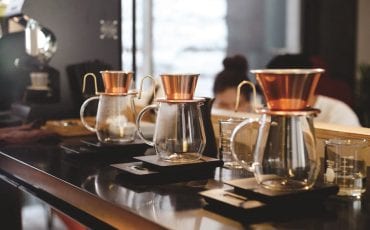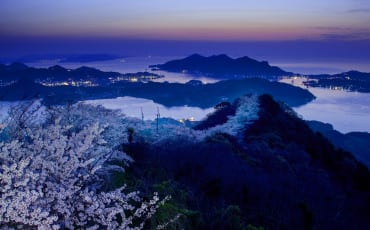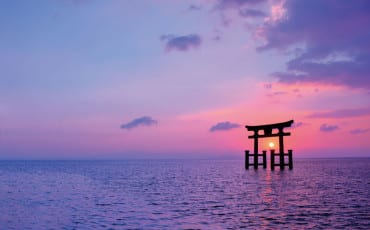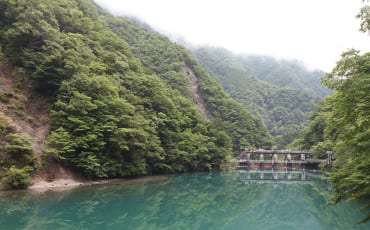Articles
Features
Oct 1, 2016
Fascinating Fukui
Stay Soba For This
If there’s one thing that the residents of Fukui take seriously, it’s soba. The prefecture is a major producer of buckwheat, and here, soba is most commonly eaten chilled with oroshi (grated Japanese white radish), soy sauce, and dashi (a stock made of sea kelp and bonito flakes). For Kenzo Takayanagi, soba is more than just a meal — it’s a way of life. One of Fukui’s most highly regarded soba masters, Takayanagi has been making soba for as long as he can remember. “I love eating soba and used to make soba as a hobby, even while I had an office job,” he reveals. About 25 years ago, he came out tops at an amateur soba-making competition and the rest, as they say, is history.
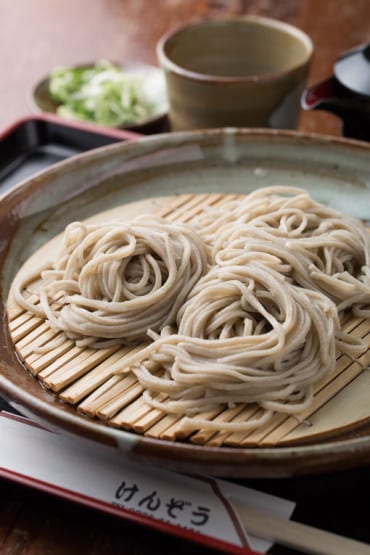
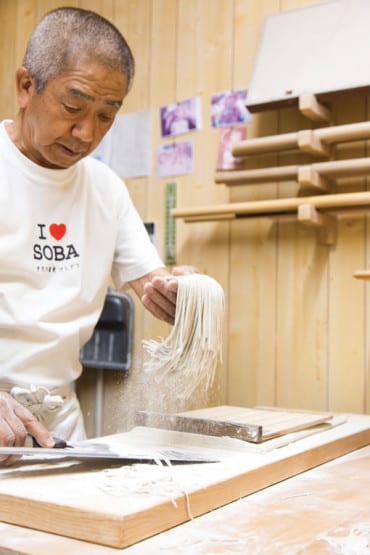 All of the soba made at Kenzo’s soba restaurant is made by hand using 100 percent soba powder. “In other restaurants, they make soba noodles using a mix of 80 percent soba powder, and 20 percent wheat. However, I prefer using pure soba as it results in the best texture possible. At first bite, you’ll find that it’s smooth and al dente.”
All of the soba made at Kenzo’s soba restaurant is made by hand using 100 percent soba powder. “In other restaurants, they make soba noodles using a mix of 80 percent soba powder, and 20 percent wheat. However, I prefer using pure soba as it results in the best texture possible. At first bite, you’ll find that it’s smooth and al dente.”
Two types of soba noodle dishes are served up here. There is the traditional oroshi soba, and there’s also soba served up with a dipping sauce made of crushed daikon juice and a special soy sauce. The latter — which has a unique bitter, spicy flavour — is Takayanagi’s personal favourite way of enjoying soba.
The Rice is right
The much-loved and now world famous koshihikari rice was actually developed right here in Fukui. It always feels like a privilege to meet farmers whenever we go on these trips to Japan. As city dwellers in a country that imports the bulk of its food, we are so far removed from our food sources that it’s easy take to not give a second thought to how it’s grown or harvested.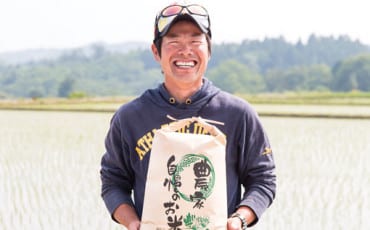
To find out more about rice production in Fukui, we meet up with farmer Daisuke Hasegawa at one of his rice fields. Hasegawa — who owns 70 hectares of rice fields — grows nine different varieties of rice. Some of these are for eating, while some are used purely for making sake.
The most famous rice variant of all, of course, is koshihikari. Sweet, nutty, and with a plump, fluffy texture, this is Japan’s most well-loved rice variety. Fukui is responsible for producing only about 1 percent of all the koshihikari rice in Japan. In recent years, Niigata and Hokkaido have stolen some of Fukui’s thunder by becoming the two largest producers of koshihikari rice in Japan.
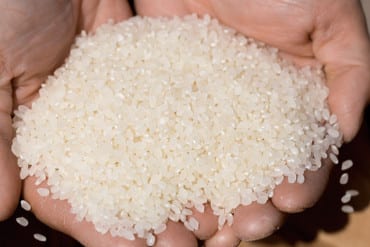 Fukui: Birthplace of Koshihikari
Fukui: Birthplace of Koshihikari
The fact remains, however, that the koshihikari grain was created right here in Fukui about 60 years ago at the Fukui Agricultural Experiment Station. The selective breeding of rice is an extremely laborious and time-consuming process, taking about 14 or 15 years just to create one variant!
“Fukui has great conditions for rice growing,” shares Hasegawa. “Lots of sunny days, coupled with just the right amount of rain and wind.” The prefecture is also blessed with ample sources of pure water, including run-off from the sacred Mount Hakusan. The sudden dip in temperatures from day to night during autumn is also said to result in a more intense flavour.
Hasegawa is proud of the fact that minimal chemical fertilisers and pesticides are used in his farming process. Not only does this result in a healthier grain, it also translates to cost savings, which Hasegawa is happy to pass onto the rest of the supply chain.
(TEXT DENISE LI • PHOTOGRAPHY TOMONOBU KITAGAWA)
>>Read more about Fukui Sightseeing
>>Read more about FukuiExperience
>>Read more about Fukui Souvenirs





